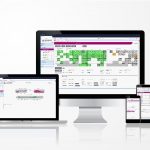Every transportation management system (TMS) presumes to add efficiency. The mere function of automating processes will accomplish that goal to some degree.
But as freight brokers know from dealing with the day-to-day needs of their client, just because a process is automated doesn’t necessarily mean it accomplishes a better outcome. Making decisions about load coverage requires an understanding of the various options – which verticals to deploy, which mode processes to implement – based on the nature of the load, the destination and the unique needs of the shipper. Brokers know these details. The automation functions of the TMS may not. But they can, and they should.
The freight industry needs to embrace a new standard for TMS platforms that offer not just automation, but flexibility that leads to optionality. In other words, the TMS should do more than just automate basic functions. It should enable you to automate different options depending on the details of a specific shipment. The ultimate result of it all should be workflow automation that’s efficient, not just because it’s fast, but because it knows how to make the right choices in a given situation.
For example, a shipment that requires a cold-storage vehicle needs temperature checks. That should be built into the TMS. But you obviously don’t need a temperature check if you’re hauling freight with a flatbed trailer. It’s a totally different check call, and there should be other ways of setting up the TMS to respond to each situation. The optimal design would allow brokers to create their own automated workflow for every type of situation – giving it a command that, when a specific event occurs, it triggers certain responses based on the shipment requirements at hand.
The same could be true with loads of different sizes. A broker might know that a particular carrier is best equipped to handle a certain size load, so the TMS should allow the broker to automate those loads to default to that one carrier. Another example is when a carrier knows exactly how to deal with loads from a specific shipper. Through the flexibility of some TMS providers, a broker has the option to go into the TMS and choose to default to that same carrier whenever the shipper in question is shipping future freight.
Some of the triggers might include:
- Creating the shipment, with the system initiating the workflow based on the parameters the broker chooses.
- Updating the shipment, with the system not only initiating the workflow but editing it as necessary to reflect what’s happening with the load.
- Status updates, the system initiates a workflow when the shipment status is updated through the check call model.
- Scheduling of shipments, allowing brokers to tell the TMS to schedule the workflow to take effect at specific dates and times.
The scheduling mode is critical. It should allow brokers to trigger workflows weekly or daily, and to specify days when the weekly workflows should be activated, or a specific date for monthlies. Only with such options built into the TMS can brokers really serve the needs of each individual shipper – and respond to the dynamics of each individual load – while still managing to automate the process for optimal efficiency. Otherwise they would constantly be intervening to manually manipulate the workflows. The type of TMS that performs in this way takes the knowledge, experience, and insight of the best brokers and makes them part of the automation process.
Brokers know their clients’ needs, the regions where they operate, and the carriers who can handle different kinds of situations. A broker with this much knowledge needs a TMS that provides the same options that build the knowledge and flexibility into the automation.
The result is powerful: Brokers can build their own workflow automations, which can even become standard on something as essential as a truckload quoting page. Once the workflows are built, it becomes easy for someone working from a quoting page to find specific matching coverage for every load.
It all comes back to the options. The more options a broker has, the more precise the process will be, and the more efficient the workflows will be. Optionality ultimately drives efficiency by helping users set up workflows swiftly and take advantage of time-saving built-in features – all while streamlining the process of entering the shipment information. When the process is this efficient, and this precise, it eliminates much of the manual effort – not to mention the guesswork – that bogs people down and gets in the way of their additional daily workload.
Automation is great. But automation with real flexibility means optionality – the best possible combination of people’s knowledge and technology’s power. That’s when real efficiency happens.







